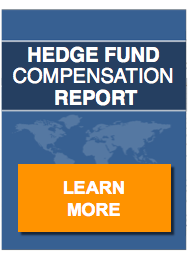Anyone scanning the financial headlines might reasonably conclude that the hedge fund industry is hemorrhaging assets like a gut-shot hemophiliac. While true that net asset flows are in the negative for the first time in the years following the financial crisis, these outflows cannot be described as epic. They are but a fraction of the outflows the hedge fund industry experienced in 2008 and 2009.
The reality is far less dramatic than the headlines imply. Net hedge fund outflows through the first half of 2016 totaled $34 billion. While the decline in assets under management (AUM) of $34 billion makes for a powerful headline, it represents an unremarkable one-tenth of one percent of total hedge fund AUM. That percentage shrinks further when funds of funds AUM are included in the calculation. Because this infinitesimal number is less impactful, it will never rate a place in mainstream media headlines.
Speaking of impact, which of the following headlines paints the darker picture for hedge funds:
- Hedge Funds See Largest Outflows Since 2009
- Hedge Funds Stumble after Six Years of Steady Growth
While the first one is factually correct, a $34 billion decline in AUM is decidedly a non-event in a $3 trillion dollar industry.
A Stalled Global Economy and Economic Uncertainty
The global economic slowdowns, featuring China at the tip of the spear, followed closely by a weakening European Union, the myriad unknowns which surround Brexit and the weakest U. S. recovery since WWII, are having a predictable effect on hedge fund fortunes. Add to these woes, the political two-step orchestrated by Janet Yellen’s FOMC on the question of interest rate hikes and one has to marvel at how effectively hedge funds performed in such a hostile economic environment.
Publicly traded corporations, unable to generate organic growth in this economic maelstrom, have focused on mergers and acquisitions to meet shareholder revenue growth expectations. As a result, 7,769 companies disappeared from the public markets between 1998 and 2012. By the end of 2013, just 5,008 companies were listed on major U. S. exchanges. Today, less than 4,000 companies are actively traded on the NYSE and NASDAQ.
The Dilemma
Institutions, endowments, foundations and other multi-asset investors are rightly struggling with the decisions each must make with regard to where and how they will allocate their investment dollars. Investors who have redeemed their hedge fund assets based on performance should be asking themselves if their expectations were reasonable. Did they invest in the right hedge fund strategy?
There is evidence that investors are having an epiphany. August 2016 saw $6.3 billion in net flows. While YTD flows through August remain in the negative ($51.8 billion), August results may signal a turnaround.
The quandary faced by many investors is one of choosing the right hedge fund relative to existing internal constraints such as liquidity, fees, experience and resources. Understandably, there will be those who opt-out of hedge funds due to one or more of these restraints, but, abandoning hedge fund investments because of hysterical headlines is not a smart play.
When the full year’s results are recorded, hedge fund AUM could be back in the black.


